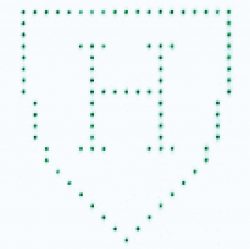In yet another quantum leap in the quantum realm – physicists from the Harvard-MIT Center for Ultracold Atoms have demonstrated a ‘programmable quantum simulator’ capable of operating with 256 qubits.
Using arrays of highly-focused laser beams, the system traps individual qubits and drags them into desirable arrangements to perform meaningful calculations. The scientists’ design is a gigantic step forward in a bid to build large-scale, practical quantum computers, immensely increasing their applicability in the near future.
Quantum states exceed the atoms in the solar system.
Described in the journal Nature, the researchers explained that it is the combination of the system’s unprecedented size and programmability that puts it at the cutting edge of the race for a quantum computer, which harnesses the mysterious properties of matter at extremely small scales to greatly advance processing power.
And the processing power of a 256-qubit system is nothing short of mind-blowing – the number of quantum states that are possible exceeds the number of atoms in our solar system.
The quantum simulator has already enabled physicists to observe some exotic quantum states of matter that had never been possible. They also performed a highly accurate quantum phase transition study to demonstrate how magnetism works at the quantum level.
Through such experiments, valuable insights into the quantum physics mechanisms underpinning material properties can be ascertained, allowing future scientists to better design materials with exotic properties.
Positioning qubits with light-based tweezers.
The project is an upgraded version of a platform the researchers developed years ago, which achieved 51 qubits using rubidium atoms lined up in a one-dimensional array.
And now, the 256-qubit system is based on 256 rubidium atoms arranged in a two-dimensional array. While trapping and arranging a large number of qubits in two-dimensional – and even three-dimensional – arrays are not something new, coherently manipulating them to form a programmable, strongly interacting system has remained to be the largest hurdle.
The MVP in this new platform is something called the ‘spatial light modulator’. It essentially transforms light into uniform, two-dimensional arrays of highly focused laser beams that act as optical tweezers. Now imagine that these light-based tweezers are used to perform surgery on qubits with extreme precision. To create the quantum simulator, the researchers randomly load the first set of tweezers with the qubits, while using the second set of tweezers to precisely drag the qubits to their desired locations and geometries, eliminating the initial randomness. This technique gives them complete control over the positioning of the qubits and their coherent quantum manipulation, enabling the system to function as a simulator to perform useful calculations typically impossible with classical computers.

Using the optical tweezers, the researchers positioned individually laser-cooled atoms in programmable geometries such as the Harvard shield. Photo credit: Lukin group/Harvard
Quantum simulator vs quantum computer.
But how does a quantum simulator differ from a quantum computer?
A quantum simulator, while unlike a gate-based or annealing-based quantum computer, consists of software programs that are used to model a larger quantum mechanical system by applying the same quantum rules on classical computers. This makes it possible to run and test quantum programs in an environment that predicts how qubits react to different operations. As an analogy, imagine how aerospace engineers design aeroplanes. Using computational simulations, they place a model aeroplane in a simulated wind tunnel with various changes in environmental factors to gain knowledge of how the real aeroplane will perform once it is constructed.
“This work enables a vast number of new scientific directions,” said Sepehr Ebadi, the lead author of the study. “We are nowhere near the limits of what can be done with these systems.”
The researchers are now attempting to improve the system by enhancing their control over the optical tweezers, which enables the system to be more programmable.
It will be exciting to see how these quantum machines shed light on a host of complex quantum processes and bring about major real-world breakthroughs in a myriad of fields such as material science, information technology, finance and climate modelling.






























